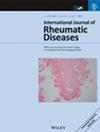Exploring the Targets of Gulao Yukang Pill in Rheumatoid Arthritis via the Hippo Signaling Pathway: An Integrated Network Pharmacology and Experimental Validation Study
Abstract
Objective
Investigating the Mechanism of Gulao Yukang Pill (GLYK) in Treating Rheumatoid Arthritis (RA) via the Hippo signaling pathway and Its Regulatory Effects on Th17/Treg Cell Balance.
Methods
Network pharmacology was applied to construct a network mapping the interactions between drug active ingredients and target genes, pinpointing the crucial active components and genetic targets through which GLYK exerts its effects on RA. Using Gene Set Variation Analysis (GSVA) in R4.2.2, we predicted the pathway activity scores of 7 Hippo pathways between the disease and control groups and selected those with significant differences. Key genes were correlated with the selected pathways, and target genes related to the Hippo pathway were screened. The binding capacity of crucial active components and their corresponding target genes was predicted using the Deep Purpose algorithm framework. Targets acting on RA were screened, and a CIA (Collagen-Induced Arthritis) animal model was developed for the purpose of further demonstrating the therapeutic impact of GLYK on RA and to verify the results of network pharmacology through histopathological observation, ELISA method detection, flow cytometry detection, Western blot detection, and qRT-PCR detection.
Results
Network pharmacology has identified nine key targets in the Hippo pathway associated with rheumatoid arthritis (RA) treatment, including Mst1 and TAZ, which are critical for GLYK's therapeutic effects as they are linked to its core effective ingredients that mediate the treatment of RA. Animal experiments validated the network pharmacology predictions, confirming that Mst1 and TAZ in the Hippo pathway are pivotal therapeutic targets for RA. GLYK suppresses inflammation and bone destruction by inhibiting the Hippo pathway components Mst1/TAZ, thereby reducing the Th17/Treg ratio.
Conclusion
GLYK can influence the expression of upstream core molecules Mst1 and downstream effector molecules TAZ in the Hippo pathway, which can reduce the swelling and arthritis index of CIA rats, lower the proportion of Th17/Treg cells, inhibit inflammation, and bone destruction. The Hippo pathway is a goal of GLYK in the intervention of RA.


 求助内容:
求助内容: 应助结果提醒方式:
应助结果提醒方式:


